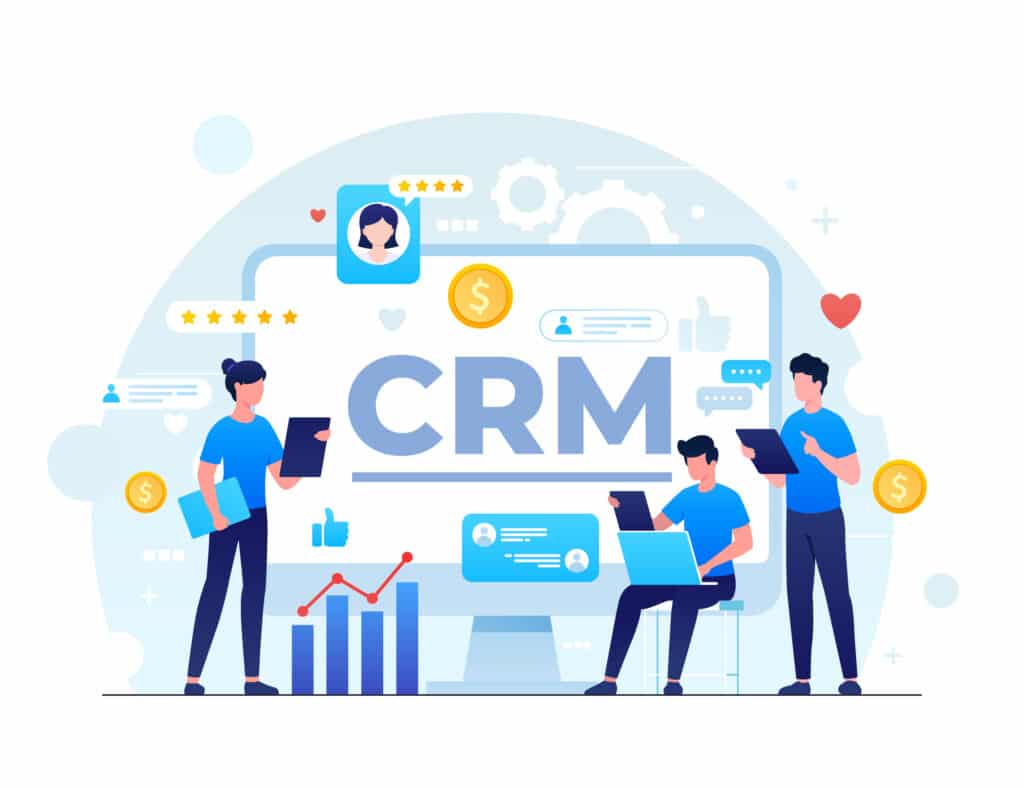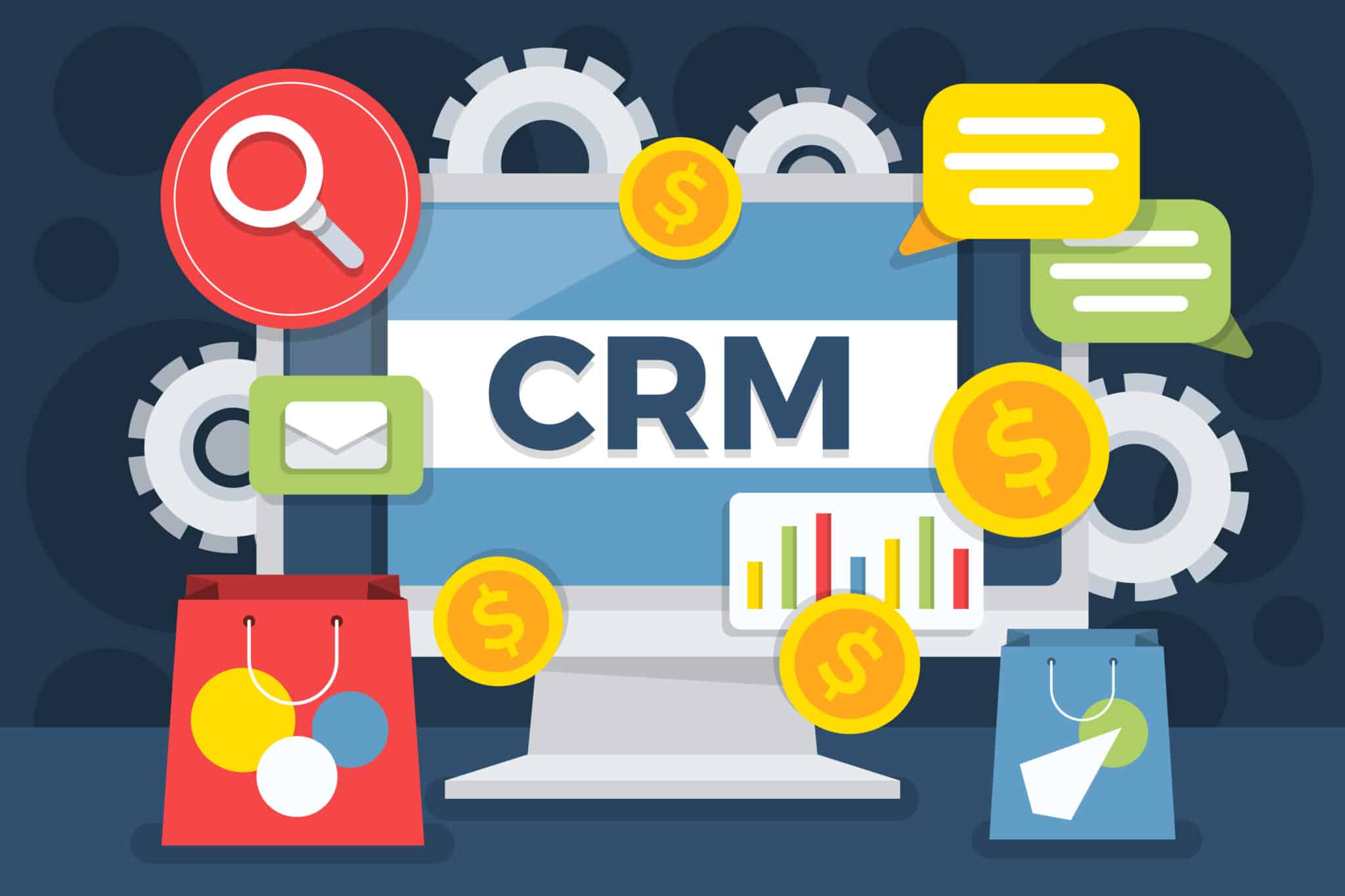Customer service modules in CRM systems provide tools for as customer needs become increasingly diverse, sales and marketing activities must meet these needs. It is difficult for many businesses to acquire new customers and retain existing ones. CRM tools can help solve these problems.
CRM tools will be discussed in this article, along with their advantages, disadvantages, and implementation steps.
What is a CRM tool?
CRM stands for “Customer Relationship Management” and is a management tool that helps to strengthen customer relationships.
Customer relationship management tools are used to improve customer satisfaction and increase profits by managing customer data and disseminating practical information.
What is MA?
The MA stands for “Marketing Automation,” and the MA tools facilitate marketing automation. Among its functions is the ability to extract potential customers and send bulk emails.
CRM works to build long-term relationships with prospects after they become customers, whereas MA works to acquire and nurture prospects as customer-focused tools.
Customer service modules in CRM systems provide tools for

Need for CRM tools
Next, we will discuss the importance of CRM tools.
- Retaining customers is important
- Diversifying customer needs
Retaining customers is essential
Retaining existing customers is one reason you need a CRM tool. In order to improve cost efficiency, acquiring repeat customers is more important than acquiring new customers.
The key to gaining repeat business from existing customers is after-sales follow-up, and CRM tools are essential for this.
Diversifying customer needs
Customer needs are diversifying in today’s world, where customers can access all kinds of information through the Internet. To meet the diverse needs of customers, it is essential to propose products and services that are suited to their needs.
Using a CRM tool, you can keep detailed records of each customer’s age, gender, and purchase history.
CRM and project management tool

The following items can be done with CRM tools.
- Managing customer information
- Sending emails automatically
- Sales progress management
- Customer behavior analysis
- Inquiry management
- External service cooperation
Managing customer information
The main functions of CRM tools are to manage customer information, such as:
- full name
- gender
- age
- email address
- telephone number
- living area
- Purchase history
- Deal History
- Inquiry history, etc.
You can use customer information to suggest products based on their attributes by managing customer information.
Sending emails automatically
Emails can also be sent automatically by CRM tools based on customer information. You can, for instance, automatically send birthday coupons to customers on their birthdays or follow up with customers after a certain period.
You can improve customer satisfaction and sales by automatically sending emails to each customer at the appropriate time.
Sales progress management
Sales activities can also be tracked with CRM tools. From the start of a business negotiation to the conclusion of a contract, you can visualize and manage sales activity progress.
By evaluating the progress of each customer’s sales activities at a glance, you can monitor the progress of their sales activities. Additionally, smooth handovers can be achieved even if there is a change in sales personnel.
Customer behavior analysis
Customer relationship management tools not only manage customer information but also analyze customer behavior. By analyzing customer attributes and purchase history, etc., it will be possible to understand trends regarding products that are easy to purchase.
It is possible to target high-probability customers by analyzing their purchasing behavior.
Inquiry management
CRM tools can also manage contact information. Inquiry information management allows you to categorize and manage customer inquiries sent via email and web forms.
Statuses like “In progress” and “Completed” can also be managed, allowing the person in charge to respond more quickly. By collecting information about inquiries, it can be easier to plan new products and services and provide better customer support.
External service cooperation
External services can also be integrated with CRM tools. By collaborating with SFA and MA, sales activities and prospect development can be improved.
By connecting with CTI installed in call centers, it is also possible to respond to customer inquiries by referring to past inquiry history and business negotiation history.
Advantages of introducing CRM tools

CRM tools provide the following benefits:
- Work can be streamlined
- Improves customer satisfaction
Work can be streamlined
The use of CRM tools can increase operational efficiency. Using the customer analysis function, for example, can save staff time from manually compiling data in Excel.
A second advantage of using automatic email delivery is that it can save time for the person who is in charge of checking the customer list and composing the email text.
Improves customer satisfaction
CRM tools can also improve customer satisfaction. You can communicate with customers based on their inquiry history, for example. Customer satisfaction will improve when inquiries are answered based on a thorough understanding of the customer.
A company can also increase customer satisfaction by managing customer information and proposing products and services that are tailored to each customer’s needs.
Disadvantages of introducing CRM tools

- Operational and introduction costs are high
- Permeating a company takes time.
Operational and introduction costs are high
CRM tools have the disadvantage of requiring implementation and operational costs. In addition to tool usage fees and option costs, maintenance costs are included in operational costs.
For cloud-based CRM tools, the cost is generally 0 to 50,000 $, while for on-premise CRM tools, it’s 500,000 to 2 million $.
Permeating a company takes time
Another disadvantage is that CRM will only be effective once it is permeated throughout the company, even if it is introduced. A CRM tool operation manual needs to be created, and an environment that is easy for field personnel to use in order to spread this within the company.
The use of CRM tools should also be promoted through regular training sessions and briefings.
CRM tool implementation steps
The following steps should be followed when implementing a CRM tool.
- Introduction and purpose clarification
- System configuration and current issues
- Selecting CRM tools based on standards
- CRM tool trial
- CRM tools fully implemented
Clarifying the purpose and use of the company is the first step in introducing a CRM tool, followed by determining the current issues and system configuration. We will select a CRM tool after establishing the selection criteria. It is essential to first introduce a CRM tool to your business on a trial basis to verify its operation and effectiveness before implementing it fully.
Summary
CRM tools are used to manage and strengthen relationships with customers. CRM tools can manage and analyze customer information, send emails automatically, and improve business efficiency and customer satisfaction. However, it is essential to remember that implementation and operation costs are high, and it takes time for them to spread throughout the organization.







